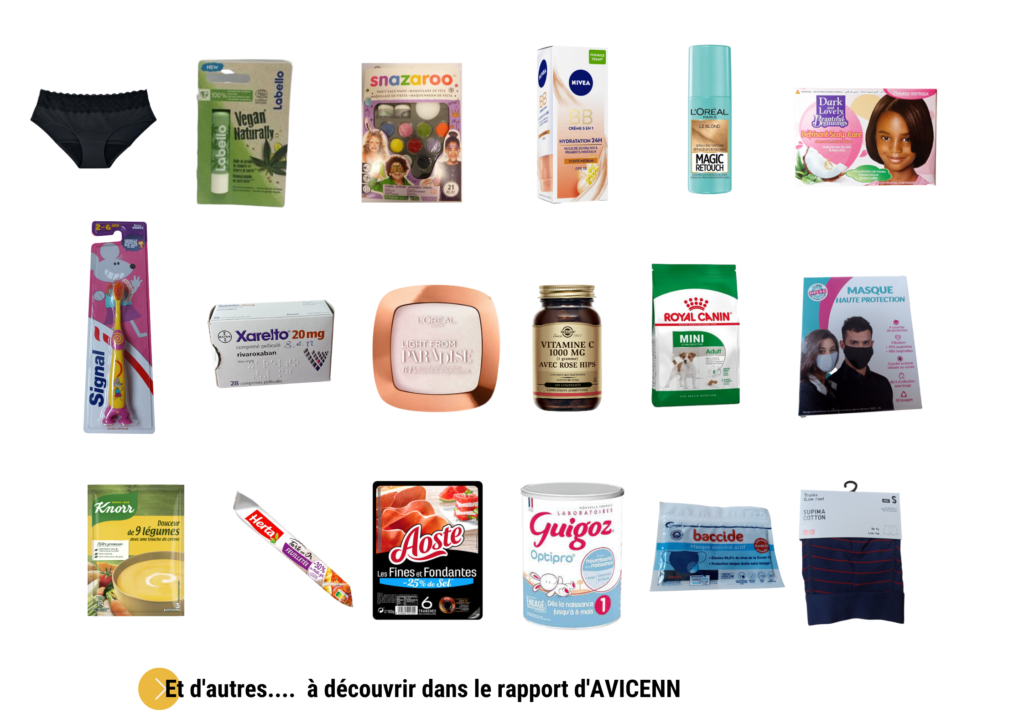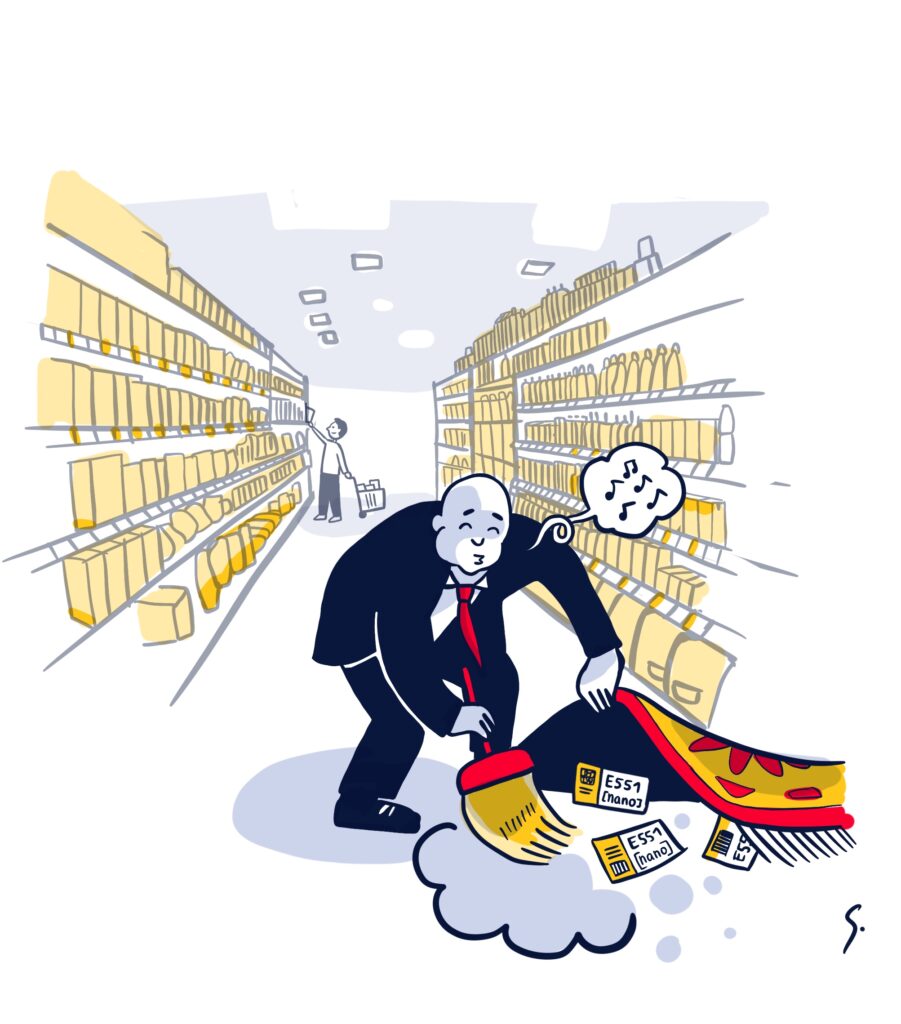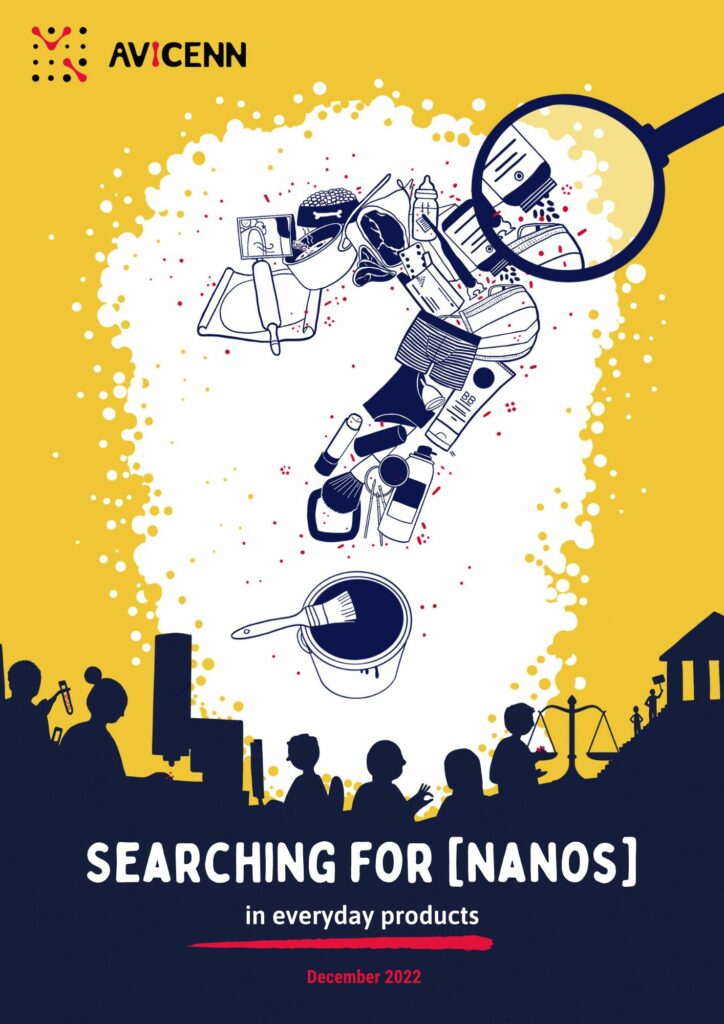
AVICENN Tests: most products with unlabeled or even unauthorized nanos
AVICENN publishes today its investigation report “Searching for nanos in everyday products“.
The association AVICENN publishes today its investigation report on nanos in everyday products . The result of a 15-month investigation revealed the presence of unlabeled and sometimes unauthorized nanoparticles in 20 of the 23 everyday products tested.
Faced with a lack of information, an investigation to better understand consumer exposure
More than four years after the investigation by 60 million de consomateurs on 18 food products in 2017, followed closely in 2018 by the one conducted by Que Choisir on 20 products, AVICENN wanted to have a snapshot showing the “nano impregnation” of everyday consumer products in 2021-2022.
AVICENN has sent 23 common consumer products of various categories – food products, cosmetics, textiles, hygiene, paint, … – to the National Laboratory of Metrology and Test (LNE). The Laboratory tests are the only reliable – albeit very expensive – way to verify the presence (or not) of nanos in finished products.
Test results: out of 23 products tested, 20 contain nanos
The results reveal the presence of nanos – unlabeled and sometimes even unauthorized – in 20 products tested, including:
- products for children: Guigoz infant milk, Snazaroo festive make-up, Signal Kids toothbrushes, etc.
- or commonly used by older people: anticoagulant medication, L’Oréal spray to cover white hair…
- but also in products that can be found in many shopping carts: cosmetics (L’Oréal, Nivea, Labello), Herta pastry, Aoste ham, Solgar vitamin C, Royal Canin dog food, Nana period panties, Uniqlo men’s underwear, etc.

Key findings
More nanos than expected and some new questions…
We selected products that, although not labeled “nano”, were more likely than others to contain nanos. And yet we were surprised by the high proportion of products containing nanos, as well as discovering nanosilica in food products with no mention of silica in the ingredients list, or titanium dioxide (TiO2) nanoparticles in underwear and in the blotting wipe under chicken portions.
These results raise questions about the extent of the use of nanos in everyday products and highlight the relevance – and even the necessity – of using the new tools available and innovative approaches to look for nanos in commonly used items.
Assessment of the [nano] labeling: a complete failure

The results show how eminently flawed the [nano] labeling is. Although not labeled “nano”, the majority of the products in which we detected nanos are covered by the European obligation of “nano” labeling that has been prevailing for nearly ten years for cosmetics, food products and biocides.
The presence of nanos in other product categories underlines the need to extend the labelling obligation [nano] to product categories that are unfortunately still not currently concerned.
Many unauthorized nanos
Our tests have also highlighted, to an unsuspected extent, the fact that nanos are commonly used even though they are not authorized. This is particularly the case of:
- colorants containing titanium dioxide nanoparticles and iron oxide nanobatches in cosmetic products,
- nanosilver in hygiene and health products.
Our demands
Because of health and environmental risks associated with nanomaterials, AVICENN makes three requests at the end of the report:
1 – to improve knowledge and awareness of marketed nanomaterials, in particular by improving the register (ten years after its creation, this register remains a real sieve) and the implementation of a European register of products containing nanos and to better evaluate their risks, by making the companies that import, produce or use them contribute to the analyses;
2 – increase transparency on these nanomaterials with, among other things, the intensification of controls and sanctions in case of non-compliance with legal obligations (whether it be labelling, registration, and/or authorization);
3 – and finally, increase vigilance with the introduction of a generalized obligation for an assessment of the benefit/risk ratio and collective utility of nanomaterials BEFORE they are put on the market and with the implementation of specific measures concerning nanos that escape the new European recommendation for the definition of the term “nanomaterial“. The announced transposition of the nanomaterial definition into the regulations governing cosmetics and “novel foods” being under review, the risk is indeed great that many nanos could go off the radar of public authorities.
They talk about our investigation
- European and international press: Chemical Watch, RFI, BBN World News, The National Law Review, Food Navigator, California 18, Il Salvagente, Il Ssusidario, Psychomédia, RTBF, the NanoDataBase, …
- National media : France inter (7 a.m. news on December 15), France info web, radio and TV, Le Monde, What to choose, 60 millions de consommateurs, Liberation, The Tribune, 20 Minutes, Le Figaro, Les Echos, La Croix, The Express, BFM, Ecoréseau, Syndicalisme Hebdo, Lutte Ouvrière, Novethic, Reporterre, GEO, Planet, HelloDoctors, Alternative Health, Santé Magazine, I’m interested, Medisite, Why Doctor, Femina, Femme actuelle, Madame Figaro, Marie-Claire, …
- Regional media : France Bleu, Ouest France, Nice Matin, Var Matin, La Dépêche, …
The report is also available in English
The English version of our report is now available, please feel free to distribute it to your English-speaking contacts who might be interested: Searching for nanos in everyday products.
It was released at the conference organized by the European NGO ECOS on February 15, 2023, entitled “Unnoticed and ungoverned: How nanomaterials are slipping through the cracks” (and relayed by One Policy Place – OPP).
The latest news
Our information sheets to go further
Upcoming Nano agenda
- 8th Congress of Occupational Medicine and Health (CNMST 2026)
- Theme 5: Emerging pathologies and risks, Mr Henri Bastos (ANSES), Pr Lynda Bensefa-Colas (AP-HP), Dr Catherine Nisse (CHU Lille)
- Website: www.medecine-sante-travail.com
- 20th meeting of the “nano and health” dialogue committee
- Organizer: ANSES
- Training intended for occupational physicians, occupational risk prevention specialists (IPRP), company prevention specialists, prevention department staff from Carsat, Cramif and CGSS, institutional prevention specialists (Dreets, Dreal, MSA…).
- Organizer: French National institute of research and security (INRS)
- October 5 to 9, 2026
- Website: www.inrs.fr/…/formation/…JA1030_2026




